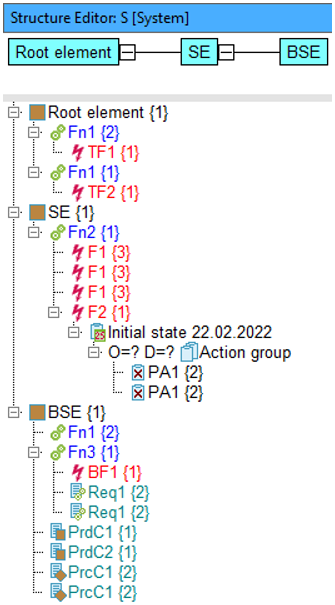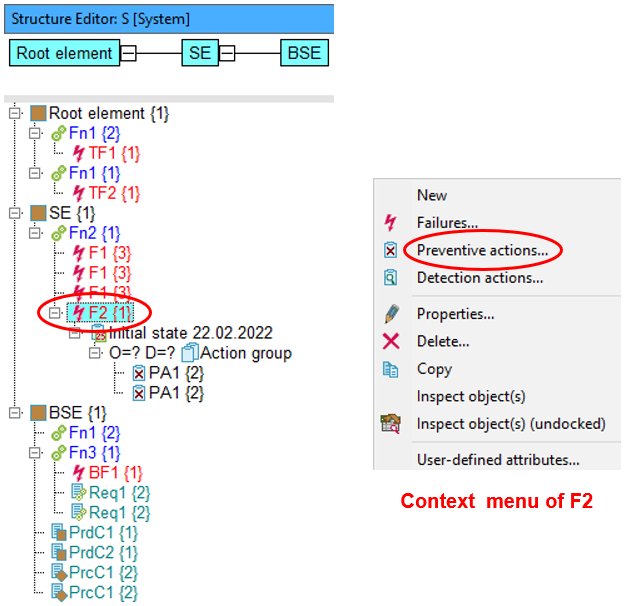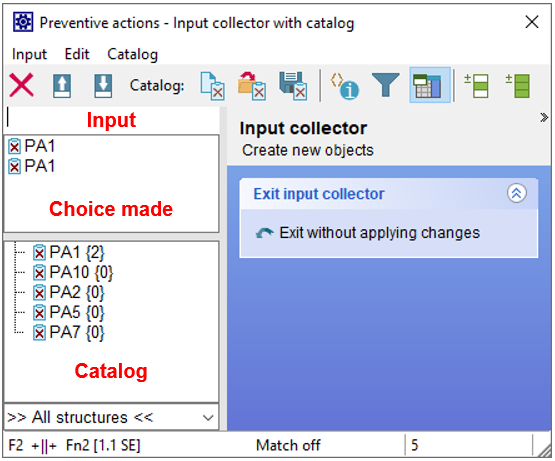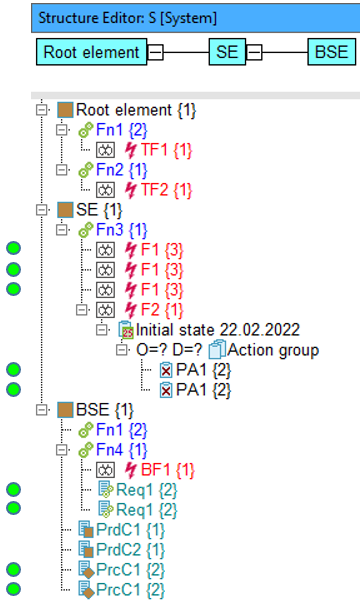Search for:
Multiple instances of a type that occur at the same independent object
Explanation:
Multiple instances of function types, characteristic types, failure types etc. will be searched for, which are anchored at the same independent and superordinate IQ object.
Note:
- Types are IQ objects that are recorded in catalogs and carry information that is the same for all instances of the type.
- Instances of IQ objects are created when IQ objects are selected from the catalogs and reused elsewhere in the IQ-Software.
Example:
Abbreviations:

- The sample structure to demonstrate how the described Quality Rule (QR) works, contains three structure elements (SE) each of which with different numbers of IQ objects (functions, failures, actions, requirements, and characteristics) assigned. All these objects are recorded in catalogs and were assigned to the superordinate IQ object by selecting them from the catalogs. That assignment was made applying the context menu (right mouse button) to the superordinate object and looks as follows, e.g., for the preventive action PA1, the superordinate object of which is failure F2:

- Selecting Preventive actions… (PA) from the context menu opens the catalog for the PA (see next figure). Using the screen called “Input collector with catalog“, PA existing in the catalog – also called object types – can be assigned to the superordinate failure (in that case F2). Thus, the so-called instances of types are created. If you do not want to select an available PA type but create a new action, you can do that in the field “Input“ on the same screen. This will also anchor a new PA type in the catalog which is available for later selection.

- In the example, PA1 is assigned twice to the superordinate failure F2 – for whatever reasons (see field “Choice made“). This double assignment does not make sense, which is why the QR detects corresponding multiple instances of object types. The important thing is that only multiple instances of object types will be searched for and found, which are anchored at the same independent and superordinate IQ object (see next figure).

Search result: 
If you visually analyze the structure list of our example using the instance count of object types (in { }) and considering the condition that matching multiple instances of object types must be anchored at the same independent and superordinate IQ object, then you get nine matching multiple instances. These include the three instances of F1 as well as two each for the instances of PA1, Req1, and PrcC1. Both instances of Fn1 {2} are not included in the search result, because the condition that they must be anchored at the same independent and superordinate IQ object is not met.
Attention: It may happen that two types have the same name, e.g., “Function 1 {3}” and “Function 1 {2}”, with the number in the brackets representing the instance count. If the instances anchored at the same superordinate object share a name but their types are not the same the QR does not mark them as hits. If you find types of the same name, you should question whether they make sense at all or if they are needed in your FMEA.


